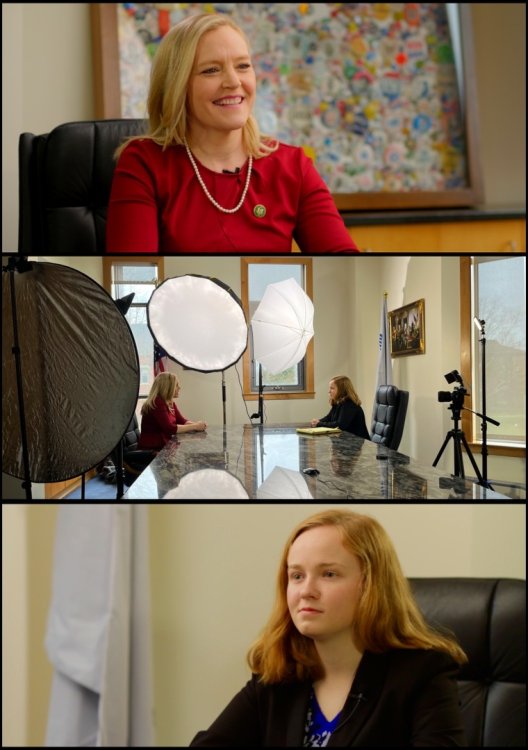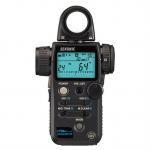Leaderboard
Popular Content
Showing content with the highest reputation on 06/30/2025 in all areas
-
The YouTubers are fighting!
FHDcrew and 2 others reacted to newfoundmass for a topic
Yeah, I think we’ve hit a ceiling in a lot of ways. Most of the "progress" over the last couple of years has been in resolution increases, but visually it hasn’t been a major leap. It’s nothing like the jump from SD to HD, or even HD to UHD. And honestly, most of us aren’t even making full use of UHD, since our TVs usually aren’t big enough to show the difference clearly. There have been a lot of quality-of-life improvements when it comes to acquiring images, and things like color science have improved. But visually, you can still take a GH5 and, with some effort, get results that look very close to modern cameras. I can’t say the images I’m getting from my S5 and S5IIX are that much better than what I got from my old GH5. The larger sensor and better color are definite upgrades, but I don’t always take advantage of them. I often shoot at f/4 or higher because I don’t want extremely shallow depth of field. And while the color is nicer out of the box, it mostly just saves time. I was still able to get the look I wanted from the GH5 with a bit more work.3 points -
The elephant in the room is Resolve. As I have discussed and demonstrated in my "New travel film-making setup and pipeline - I feel like the tech has finally come of age" thread, over the last decade Resolve has gotten more feature-rich, but more importantly, it's made it HUGELY easier to use and get good images. People now have a lot more knowledge about colour grading tools and techniques, that's for sure, but things like the Film Look Creator enable you to use a single node, you set your input and output colour spaces, and then you can adjust exposure / WB / saturation / contrast and all sorts of other things in the same tool. You don't even need to apply a film look at all... just select the "Blank Slate" preset, which sets it to have no look at all, and you can still use all the tools to adjust the image without having to worry about colour management at all. Any improvement in your post-processes is a retroactive upgrade to your camera, your lenses, and all the footage you have already shot. Colour grading is such a deep art that I think the average GH5 user back in the day was probably extracting a third of the potential of the images they'd shot, if that, simply because they didn't know how to colour grade properly. I'm not being nostalgic about the GH5 either, the same applies for any camera you can think of. There are reasons to upgrade your camera, for sure, but most of the reasons people use aren't the right reasons, and they'd be better spent taking the several thousand dollars it would take for a camera upgrade and taking unpaid leave from their job and improving their colour grading skills instead.2 points
-
Let’s share our work guys! I’ll start. Here is an interview I shot and lit the other day, featuring a congresswoman from Indians! One camera was a Nikon z6 recording into an Atomos ninja v. With a Tamron 45mm 1.8. The other was actually the ancient, cheap Canon 7D fitted with a Canon 85mm 1.2 shot at f/2.5!1 point
-
It still have one of the sharpest FHD footage since it is supersampled from 4k sensor If C100II have 4k it will certainly change the projectary of the cinema space, unfortunately Sony came out with 4k FS5 and that was history (I was one of the early adaptor of fs5 ha) With c300ii only have 4k30p certainly doesn't help either when FS7 have 4k60p1 point
-
The Canon C100 was a fantastic camera. Great images and ergonomics. It's main problem for me was it's size. It was hard to pack away quickly with a lens attached.1 point
-
GxAce's stuff is so good. One of the few YTers I will purposefully wait to watch on my desktop or TV.1 point
-
prepping a no budget feature. here's some stuff that i like somewhat from the past year and a half or so:1 point
-
This seems like a simple question, but the more I think about it, the less simple it gets. Let's start out with the seemingly obvious answer - it looks like Super-16 because the sensor is literally a S16 sized sensor. End of thread, thanks for coming, byeeeee! Here are some thoughts suggesting it looks more like S35, or at least more than S16. Some are good arguments, some aren't, but summed up I think they're hard to dismiss. It appears sharper than S16, a lot sharper. Without getting overly technical, S35 has around 4K resolution, but the level of contrast on the fine details is quite low, and it's well known that by the time you print and distribute a 35mm film it really only looks like about 2K once it's projected in cinemas. This is perhaps the biggest argument for me - the P2K just looks like cinema did in the 90s. I know this isn't comparing a 35mm neg scan with the P2K files, but virtually all the memories of 35mm film that most people would have are from movies shot and distributed on film, not from viewing modern film scans. Lenses are much sharper now too, adding to it. S16 lenses were often very vintage! We have speed boosters, much faster lenses, and much wider lenses now. One of the looks of S16 was longer focal lengths and deep DOF, but if we were to use the P2K like we would use any other camera, it would be with speed boosters and faster lenses which would have much shallower DOF. The wider lenses we have now would be much sharper and faster too. So the lens FOV, lens DOF, and sharpness combinations would all be much more like S35 was, and perhaps even exceed it. How it's used would be much more modern. The framing, movement, lighting, locations and subjects also play a role in 'placing' a medium. This has probably changed less than the above arguments, and the things that any of us might shoot are more likely to still resemble things that I would associate with S16 (like FNW and TV and low-budget projects). I'm curious to hear thoughts from others. I've been reviewing my equipment and got to the P2K and thought "oh, it's a pocketable S16 camera" but my brain immediately added "that looks like 90s movies" and then I realised that these two things don't align!1 point
-
Equivalent to 3.2K to be more precise :- )1 point
-

The YouTubers are fighting!
newfoundmass reacted to John Matthews for a topic
The human eye isn't going to get any major upgrades last time I heard. It's the one constant from the early days of image creation to now. The crazy thing about the upgrades is that many cameras being sold have less than 5000 actuation.1 point -
Yes, there has always been those who gravitate to a piece of kit for other reasons than the prudent ones that revolve around basic specs and price point - but if you're a beginner looking for an affordable/pocketable cam that will let you tell stories by capturing photos/videos with reasonably solid IQ and the standard bells/whistled (like DPAF, Digital IS, exposure tools and a camera mount for vertical-friendly shooting), there is no reason to go beyond a used R50V at the moment. Especially bcuz it is being marketed to that younger YouTube generation - and there are a number of comprehensive videos on setup/settings etc by guys like Josh Sattin. Again, this is coming from someone whose career was launched thanks in no small part to ML, and will not sell my 5D MKIIIs, still has an OG 7D that my little cousin tinkers with, has two R5Cs that are my future proof workhorses - but that is still seriously eyeing the R50V+RF 16mm combo as a fantastic pocketable travel/walk around option. In fact the only thing stopping my from picking one up now is the fact that I don't actually need one, but that I'm also waiting to see if Canon will be releasing a higher end version later this year. But also, we're forgetting the elephant in the room - which is AI and the way it might change what it means for younger generations to capture/tell visual stories.1 point




